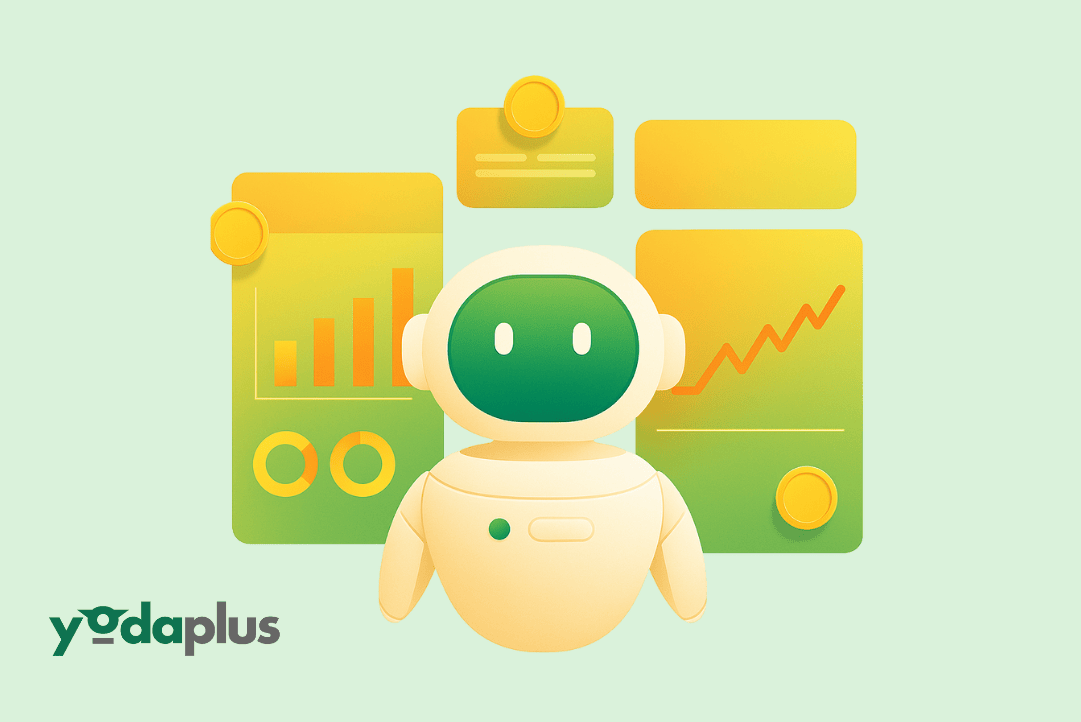
Guardrails for Artificial Intelligence Agents in Sensitive Workflows
October 1, 2025 By Yodaplus
With workflows including sensitive data, regulatory checks, and crucial decision-making, artificial intelligence (AI) is becoming more and more integrated into company operations. AI is becoming more than simply a support tool in industries like banking and logistics. Through generative AI platforms, AI-powered automation, and agentic AI, it is producing tangible results. However, the risks rise when these systems include role-switching agents, or agents that swap roles based on the job. In order to keep AI agents safe, explainable, and in line with corporate objectives, guardrails become crucial.
Why Role-Switching Agents Need Guardrails
In sensitive workflows, intelligent agents can switch between functions. For example, an AI agent might act as a financial analyst in one scenario and as a compliance reviewer in another. Without controls, role-switching can lead to inconsistent decision-making, data exposure, or bias in AI-driven analytics.
This is why businesses ask not just what is Artificial Intelligence or what is AI, but how to design AI systems that are reliable and resistant to harmful behaviors. Agentic AI use cases show that the more autonomous agents are, the higher the need for responsible AI practices and strong governance.
Key Risks in Sensitive Workflows
- Data Handling Risks
With AI in logistics, supply chains, or financial reporting, sensitive data is everywhere. AI models trained on incorrect or biased data can spread errors across workflows. Data mining and neural networks need strict validation before they inform equity research, compliance checks, or supply chain optimization. - Context Switching Errors
Workflow agents often rely on NLP and LLM technologies to interpret tasks. In multi-agent systems, role-switching can confuse task ownership. Without guardrails, an AI agent might use knowledge-based systems meant for one role to perform tasks in another, leading to costly mistakes. - Accountability Gaps
Autonomous AI and autonomous systems act with speed, but not always with transparency. In regulated industries, businesses require explainable AI and audit trails that connect agent actions with outcomes.
Guardrails for Role-Switching AI Agents
To reduce these risks, companies are adopting guardrails across their AI frameworks and AI workflows.
- Defined Role Boundaries: Each AI agent must have role definitions within the agentic framework. Role-based access reduces exposure to unauthorized data.
- Semantic Search and Knowledge-Based Systems: Reliable AI outcomes depend on structured knowledge. Semantic search ensures that workflow agents use the right context when switching roles.
- Explainable AI: Generative AI and AI-driven analytics must provide clear reasoning. Explainable outputs help financial advisors, asset managers, and decision-makers trust AI applications.
- Scenario Analysis and Risk Management: Portfolio risk assessment, sensitivity analysis, and financial forecasting are not just for investment research. They also serve as guardrails by simulating the impact of AI actions before they go live.
- Human-in-the-Loop Models: Even with autonomous agents and multi-agent systems, human oversight remains vital. AI agent software should allow supervisors to intervene when outcomes diverge from intended strategies.
Business Impact of Strong Guardrails
When businesses implement guardrails, Artificial Intelligence in business becomes more predictable and safe. For example:
- In AI in logistics, guardrails prevent workflow agents from exposing supplier data while still enabling AI-powered automation.
- In financial services, AI-driven analytics supported by audit reports ensure transparency during regulatory reviews.
- In AI in supply chain optimization, knowledge-based systems and explainable AI protect against errors caused by role-switching across different geographies.
The future of AI will depend on businesses using agentic AI solutions that combine reliable AI design with responsible AI practices.
How Platforms Are Supporting This Shift
New AI frameworks and agentic AI platforms integrate guardrails as part of their core design. Tools like MCP, Crew AI, and generative AI software support agentic AI by defining workflows, adding semantic search, and embedding risk analysis features. These features help businesses align AI agents with investment strategy, market trends, and compliance requirements.
AI model training now focuses not just on accuracy but also on resilience. With self-supervised learning, deep learning, and prompt engineering, AI agents are becoming better at role-switching without losing alignment.
Conclusion
Artificial Intelligence solutions are reshaping industries, but sensitive workflows demand caution. Role-switching agents offer flexibility, yet they can introduce risks if not controlled. With guardrails such as role boundaries, semantic search, explainable AI, and scenario analysis, businesses can use autonomous AI and agentic AI responsibly.
The future of AI will not be defined only by faster models or more generative AI tools. It will be shaped by reliable AI frameworks that balance AI innovation with accountability. For organizations, the real advantage will come from AI agents that are both powerful and safe, ensuring confidence in every decision they support.